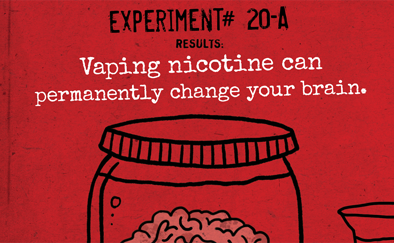KDHRC partners with an Ossining (NY) coalition executing a SAMHSA capacity development grant. We developed a hyper-local campaign to motivate adults around youth alcohol and drug abuse prevention.
Challenge
Underage alcohol consumption and drug misuse can lead to long term brain changes and addiction because of the vulnerability of young brains. By the senior year in high school, half of all kids will have consumed alcohol, half will have taken an illegal drug, and more than 20 percent will have used a prescription drug for a nonmedical purpose.1
Coalitions bring together community organizations, such as schools, healthcare, police, and nonprofits, to develop a comprehensive and community-tailored approach to substance abuse prevention.
Approach
KDHRC serves as a prevention and evaluation partner to the Ossining Communities that Care Coalition in the execution of their SAMHSA-funded capacity development grant. We developed the Grown Ups Show Up campaign, a highly localized media campaign that motivates adults in the community to engage in youth alcohol and drug prevention practices. Campaign prevention messages center around local statistics about the risks of underage alcohol, vaping, and marijuana use, a call to action, and links to resources. The campaign will allow the coalition to create cohesion across different efforts, undergird programmatic interventions, and create a rallying point for coalition members. Additionally, KDHRC developed an evaluation plan that allows the coalition to track the impact of intervention efforts to prevent youth substance abuse and increase individual, family, and community protective factors and methods to report success to funders. Despite the campaign’s limited budget and geographic scope, we infuse best practices and sound prevention principles to guarantee the campaign’s impact.
Findings
The campaign launched Fall 2021 through digital, traditional, and earned media placements. Baseline data were collected community-wide through school based surveys; we examined the relationship between the campaign launch and messages with key variables in the parent and student surveys over time. KDHRC also collected and analyzed key variables on coalition involvement, stability, and impact for grant reporting to SAMHSA.
Products
Visit ossiningctc.org/GUSU for more information about the campaign.
References
1Johnston, L. D., O’Malley, P. M., Miech, R. A., Bachman, J. G., & Schulenberg, J. E. (2014). Monitoring the Future national results on drug use: 1975–2013: Overview, Key Findings on Adolescent Drug Use. Ann Arbor: Institute for Social Research, The University of Michigan.
2Partnership for a Drug-Free America. (2010). Partnership Attitude Tracking Study: Teens and parents. Retrieved from https://www.drugfree.org/wp-content/uploads/2011/04/FULL-REPORT-FINAL-PATS-Teens-and-Parent-April-6-2011-1.pdf
3Pettigrew, J., Miller-Day, M., Shin, Y., Krieger, J. L., Hecht, M. L., & Graham, J. W. (2018). Parental Messages about Substance Use in Early Adolescence: Extending a Model of Drug-Talk Styles. Health Communication, 33(3), 349-358. doi:https://doi.org/10.1080/10410236.2017.1283565
4Schofield, T. J., Rand D. Conger, R.D., & Robins. R.W. (2015). Early adolescent substance use in Mexican origin families: Peer selection, peer influence, and parental monitoring. Drug and Alcohol Dependence, 157(129). doi:10.1016/j.drugalcdep.2015.10.020
5Zaharakis, N. M., Taylor, K. A., & Kliewer, W. (2015). What Do Urban Black Mothers Tell Their Adolescents About Alcohol And Other Drugs? Journal of research on adolescence : the official journal of the Society for Research on Adolescence, 25(1), 75–80. doi:https://doi.org/10.1111/jora.12094
6Substance Abuse and Mental Health Services Administration. (2020). Substance use prevention: Talk. They Hear You. Retrieved from https://www.samhsa.gov/underage-drinking/about
7Carver, H., Elliott, L., Kennedy, C., & Hanley, J. (2017). Parent–child connectedness and communication in relation to alcohol, tobacco and drug use in adolescence: An integrative review of the literature. Drugs: Education, Prevention and Policy, 24(2), 119-133. doi:10.1080/09687637.2016.1221060





